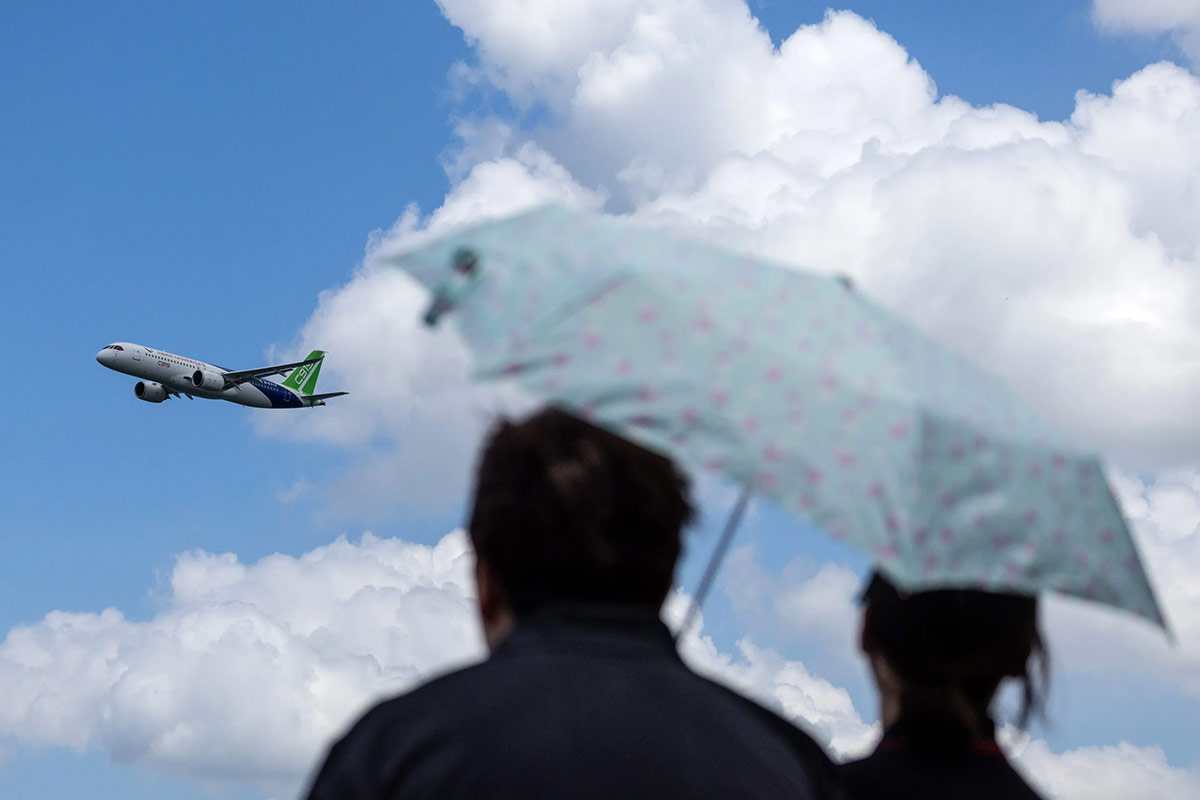The biennial event arrives as Asia’s aviation industry gains momentum after the challenging years of the pandemic, marked by numerous countries in the region restricting international travel by closing their borders.
Subhas Menon, the Director General of the Association of Asia Pacific Airlines, emphasized that this year’s show is “fully operational” with more than 1,000 exhibitors.
According to Menon, “The Singapore Airshow provides a valuable platform for exhibitors to showcase their technological advancements, such as autonomous vehicles, and demonstrate the direction they’re heading in.”
He stated that passenger volumes in the area have nearly returned to pre-COVID levels, with the Asia Pacific region anticipated to contribute to 50% of the increase in air travel demand this year.
However, despite the recovery of the aviation sector, there are broader challenges concerning the supply chain, including shortages of parts and aircraft, as well as a scarcity of personnel ranging from air crews to pilots.
“Supply chain challenges are certainly impacting the punctual delivery of aircraft and spare parts, contributing to capacity growth trailing behind the growth in air traffic,” Menon remarked.
“We’re uncertain about when this situation will alleviate, as it’s intertwined with trade tensions and geopolitical issues occurring globally,” he added.
On Tuesday, China’s Tibet Airlines finalized an agreement to purchase 40 C919 passenger jets and 10 ARJ21 regional jets from the Commercial Aircraft Company of China (COMAC). The contract was signed during the airshow.
The C919, manufactured by COMAC, is a narrow-body airliner similar to the Airbus A320neo and Boeing’s 737 Max jets. While many components of the C919 are designed by COMAC, some crucial parts, including its engine, are still obtained from Western sources.
These orders come as COMAC strives to establish itself as a competitive option for single-aisle jets, particularly as companies like Boeing and Airbus contend with order backlogs.
According to Chinese media reports, the company has received over 1,000 orders for its C919 aircraft, although it is currently certified solely in mainland China. Currently, four C919s are in operation with China Eastern Airlines.
The debut of the C919 at the show marks the first time the jet has ventured outside of Chinese territory. However, in December, the aircraft conducted a fly-past in Hong Kong, marking its initial excursion beyond mainland China.
The flying display, a highlight of the biennial air show, featured various aerial performances. Singapore’s air force showcased maneuvers with an F-15SG fighter jet and an AH-64D Apache helicopter. Additionally, both COMAC’s C919 and Airbus’ A350-1000 aircraft performed fly-pasts.
The Indian air force’s Sarang helicopter team demonstrated a range of aerial acrobatics, while the Indonesian air force’s Jupiter and the Australian air force’s Roulettes executed acrobatic maneuvers, including crossovers and forming giant hearts in the sky.
Concluding Tuesday’s aerial display, the South Korean air force’s Black Eagles, flying their acrobatic T-50B aircraft, performed maneuvers such as creating the Taegeuk, the yin-yang symbol found on the South Korean flag, using the jets’ smoke system.
The U.S. Air Force’s B-52 Stratofortress is scheduled to conduct a fly-past during Thursday’s events.
Boeing, the American aircraft manufacturer, will not showcase any passenger jets at the show. The company is facing scrutiny following a midflight blowout of a fuselage panel on one of its 737 Max 9 jets last month.
This year’s airshow is anticipated to highlight sustainable aviation efforts. Airbus will demonstrate the use of a sustainable aviation fuel blend, derived from cooking oil and tallow, along with conventional jet fuel for its A350-1000 aircraft in the aerial display.
Hyundai’s U.S.-based Supernal unit, specializing in advanced mobility aircraft such as air taxis, is also participating as an exhibitor in this year’s airshow.
Running from February 20 to 25, the event is expected to attract over 50,000 visitors. More than 1,000 companies from over 50 countries are taking part.



